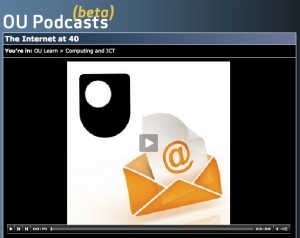If you’re interested in journalism and its future in a digital age, then read this essay by Clay Shirky. It’s the most eloquent, succinct and compelling statement of the problem that we’ve had to date. Snippets:
Revolutions create a curious inversion of perception. In ordinary times, people who do no more than describe the world around them are seen as pragmatists, while those who imagine fabulous alternative futures are viewed as radicals. The last couple of decades haven’t been ordinary, however. Inside the papers, the pragmatists were the ones simply pointing out that the real world was looking increasingly like the unthinkable scenario. These people were treated as if they were barking mad. Meanwhile the people spinning visions of popular walled gardens and enthusiastic micropayment adoption, visions unsupported by reality, were regarded not as charlatans but saviors.
When reality is labeled unthinkable, it creates a kind of sickness in an industry. Leadership becomes faith-based, while employees who have the temerity to suggest that what seems to be happening is in fact happening are herded into Innovation Departments, where they can be ignored en masse. This shunting aside of the realists in favor of the fabulists has different effects on different industries at different times. One of the effects on the newspapers is that many of its most passionate defenders are unable, even now, to plan for a world in which the industry they knew is visibly going away.
[…]
That is what real revolutions are like. The old stuff gets broken faster than the new stuff is put in its place. The importance of any given novelty isn’t apparent at the moment it appears; big changes stall, small changes spread. Even the revolutionaries can’t predict what will happen. Agreements on all sides that core institutions must be protected are rendered meaningless by the very people doing the agreeing. (Luther and the Church both insisted, for years, that whatever else happened, no one was talking about a schism.) Ancient social bargains, once disrupted, can neither be mended nor quickly replaced, since any such bargain takes decades to solidify.
And so it is today. When someone demands to be told how we can replace newspapers, they are really demanding to be told that we are not living through a revolution. They are demanding to be told that old systems won’t break before new systems are in place. They are demanding to be told that ancient social bargains aren’t in peril, that core institutions will be spared, that new methods of spreading information will improve previous practice rather than upending it. They are demanding to be lied to.
[…]
Print media does much of society’s heavy journalistic lifting, from flooding the zone — covering every angle of a huge story — to the daily grind of attending the City Council meeting, just in case. This coverage creates benefits even for people who aren’t newspaper readers, because the work of print journalists is used by everyone from politicians to talk radio hosts to bloggers. The newspaper people often note that newspapers benefit society as a whole. This is true, but irrelevant to the problem at hand; “You’re gonna miss us when we’re gone!” has never been much of a business model. So who covers all that news if some significant fraction of the currently employed newspaper people lose their jobs?
I don’t know. Nobody knows. We’re collectively living through 1500, when it’s easier to see what’s broken than what will replace it. The internet turns 40 this fall. Access by the general public is less than half that age. Web use, as a normal part of life for a majority of the developed world, is less than half that age. We just got here. Even the revolutionaries can’t predict what will happen.
Thanks to Jeff Jarvis for the link.

